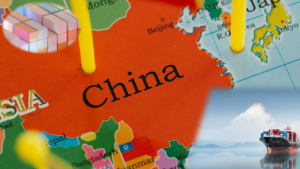
The United States and China are currently engaged in trade talks this week in Stockholm, Sweden, aiming to extend their reciprocal tariff truce which is set to expire on August 12. These discussions are a crucial point in the economic relationship between the two global powers.
Key Figures Involved:
- United States: Treasury Secretary Scott Bessent and Trade Representative Jamieson Greer.
- China: Vice Premier He Lifeng.
Current State of Affairs:
Contrary to earlier remarks by President Donald Trump that China is “ready to deal,” Treasury Secretary Bessent has confirmed that China is not currently negotiating tariff reductions. This is a source of concern for policymakers and investors, as existing tariffs continue to strain global supply chains.
Tariff Landscape:
The US has imposed 145% tariffs on Chinese goods, while China has retaliated with 125% tariffs on US imports. Economic experts warn that these high trade barriers will lead to shortages and increased costs for American consumers. Businesses relying on imported inputs may struggle to maintain stable prices, contributing to inflationary pressures. Such prolonged tariff regimes could also force businesses to seek new suppliers, thereby altering global trade flows.
President Trump’s Approach:
President Trump has stated his intention to dictate trade terms unilaterally, without the need for formal tariff negotiations. This suggests a continuation of tariffs without seeking reciprocal deals, which could prolong trade hostilities. While some see this approach as leverage for the US, others caution that it may deter cooperative economic solutions beneficial to both nations in the long term.
China’s Economic Response:
In response to the economic impact of tariffs, China has announced new stimulus measures to stabilize its economy. These include:
- Reductions in interest rates.
- Reduced bank reserve requirements.
- A 500-billion-yuan consumer financing facility for large-ticket purchases.
- A 300-billion-yuan technology investment facility for semiconductor development, AI, and renewable energy.
- Reducing stock transaction fees and suspending new IPO approvals.
- A 200-billion-yuan market stabilization fund.
- Fiscal adjustments like infrastructure investment, green energy transition, and digital economy funding.
- Tax incentives, including a 25% increase in export tax rebates for certain sectors and a temporary VAT reduction for small and medium enterprises.
These measures aim to stimulate domestic investment and consumption to counteract the negative effects of the trade war. However, analysts remain skeptical about their sufficiency to fully counter the broader challenges posed by tariffs.
Market and Global Implications:
The announcement of trade talks has already positively influenced global markets, with US stock futures rising in anticipation of potential de-escalation. Investors are closely monitoring the talks, as continued trade tensions could lead to economic instability in both nations. The Federal Reserve is likely to maintain its current interest rate policy until more clarity emerges regarding the future of tariffs. Positive outcomes from the negotiations could stabilize financial markets, stimulate economic growth, and reduce uncertainty for businesses and consumers.
Looking Ahead:
The ongoing talks are of significant global interest. While the US aims to stabilize trade relations, China’s refusal to negotiate tariff reductions presents a substantial hurdle. The outcome of these discussions will be critical in shaping the future direction of US-China trade relations, impacting global supply chains, economic policies, and investment patterns.
TradeFlex’s Support:
TradeFlex offers strategic insights to businesses, including tailored nearshoring strategies for efficiency and cost reduction, tariff engineering for compliance and savings, and comprehensive supply chain solutions like customs support, 3PL logistics, and freight forwarding. These services are designed to enhance business agility and resilience in the dynamic global trade environment.



